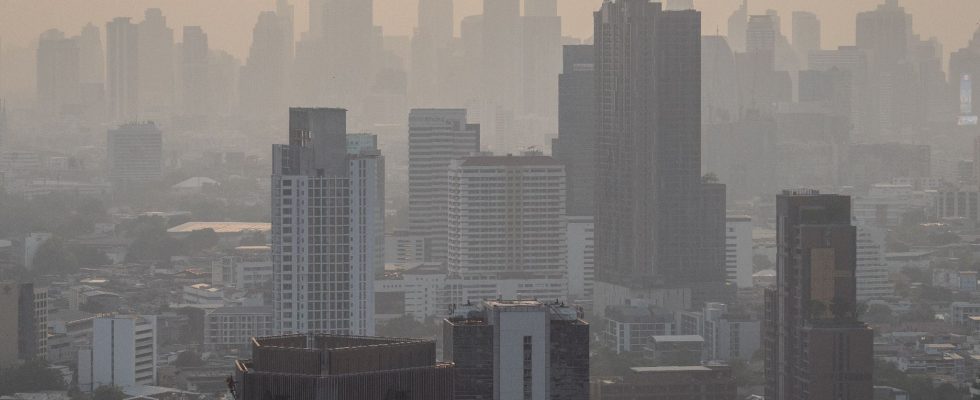Chemical pollutants are everywhere around us. Whether we are in the office, in nature or at home, they are present in the air, in the water, in our clothes but also in our food and the objects that punctuate daily life. These pollutants are multiple and their long-term consequences can be devastating. However, knowledge about the effects of chemical pollution on our health remains very incomplete.
With the aim of raising awareness among decision-makers and citizens of the necessary prevention of risks linked to chemical pollution and developing research in this major area, Yves Levi, professor at the Faculty of Pharmacy at Paris Sud University, member of the National Academy of Pharmacy and the National Academy of Medicine, presented a white paper on the subject to the National Assembly, this Wednesday, January 31. For L’Express, he returns to the challenges of acquiring more knowledge on an issue that he considers “as important as global warming”.
As you say in your document, around 40,000 to 60,000 chemicals are marketed around the world. Dispersed in nature, they contaminate air, water, foods of plant and animal origin, everyday objects… Do we know what their effects are on health?
Yves Levi: First, there are many more than 40,000 to 60,000 chemicals. There are tens of thousands more. Those which are encrypted are the largest masses, they are those which circulate the most and which we already know. These chemical pollutants are found everywhere, it is almost impossible to escape them. It is no longer the visible pollution which is that of large clouds and which we once imagined: today, it is invisible and daily.
At every stage of our day, of our life, we are exposed to these pollutants. It is exposure to all these pollutants at the same time and repeatedly that causes health effects. The sum of these mixtures of products, to which we are exposed day after day from the embryo, induces problems with development, fertility, asthma, cancer, etc. A considerable part of our diseases are linked to chemical pollution of the environment. ‘environment.
Political and media attention regularly focuses on some of these pollutants: endocrine disruptors, eternal pollutants, etc. But you deplore a lack of knowledge on the subject. Finally, do we know the toxicity, or the degree of toxicity of interactions between pollutants?
As research continues, knowledge of these mixtures improves. The more knowledge we acquire on the subject, the more worried we become. Especially since we continue to discover new mixtures of these pollutants.
We have biological measurement methods, but when we observe these mergers of chemical pollutants in the environment, we are not yet able to say in advance what the effects will be. We have means and tools, but they do not yet have the scale necessary to accelerate knowledge. You have to imagine that it is a global global pressure, there are no borders. Pollution acts on the ecosystem and on humans. We find them everywhere. And yet we do not consider it as a pressure as strong as climate change. We hear about chemical pollution, but we don’t put the intensity into it that requires research to move more quickly towards prevention solutions in order to limit the risks. We know of many things serious enough to raise alarm, in terms of the presence of these pollutants and health risks, but many things need to be improved to be able to better prevent. Research still needs to develop, supported by significant investment.
You presented your white paper to parliamentarians this Wednesday, January 31. What do you expect from public authorities?
One of the missions of the founding of the Academy of Medicine is to ensure an interface between the very great knowledge of the scientific world and the general public. The first objective of this white paper, which is accompanied by a glossary, is therefore to ensure that all stakeholders talk to each other, including consumer associations, local elected officials, parliamentarians and scientists. We must succeed in communicating better, explaining better, so that citizens understand the extent of the problem, and can sometimes better protect themselves at home. You should know that today, we already have to manage problems linked to these mixtures of chemical pollutants, in particular when municipalities cut off tap water because their content is not good.
At a time when it is fashionable to want to “break standards”, I think on the contrary that it is necessary to establish them in this area, and to stick to them to protect health and the environment. .
.
